I warn you now that if you are at all adverse to anything with many legs or a vicious sting then this post is definitely not for you. The creatures of which I speak were all discovered last Saturday, another typically wet day that led us to Parc le Breos and the impressive Cat Hole Cave. It’s a location that I have visited on a number of occasions but never fully explored, so armed with a torch we headed into the caves deepest recesses to see what was what. To my surprise the cavern was much larger than I had anticipated and replete with many Stalactites and Stalagmites that were glistening in the moist air. You may imagine that geology was all we would find in somewhere starved of all natural light, but a passing Bat was a mere hint of what might have been hiding in the numerous nooks and crannies. On a smaller scale, but equally unnerving to see illuminated in a torch beam, were the Cave Spiders that hung from almost every surface. Despite initial impressions they are surprisingly beautiful up close, especially with their bodies covered in tiny water droplets as a result of the almost one hundred per cent humidity within the cave.
Reading up on Cave Spiders I wasn’t surprised to find out that they are strongly repelled by light, but I didn’t realise that their offspring are actively attracted to it as a way of forcing them to seek out new areas to colonise. I can definitely vouch for them being the UK’s largest spider though, and I must admit I wasn’t too disappointed when we were back out in the open.
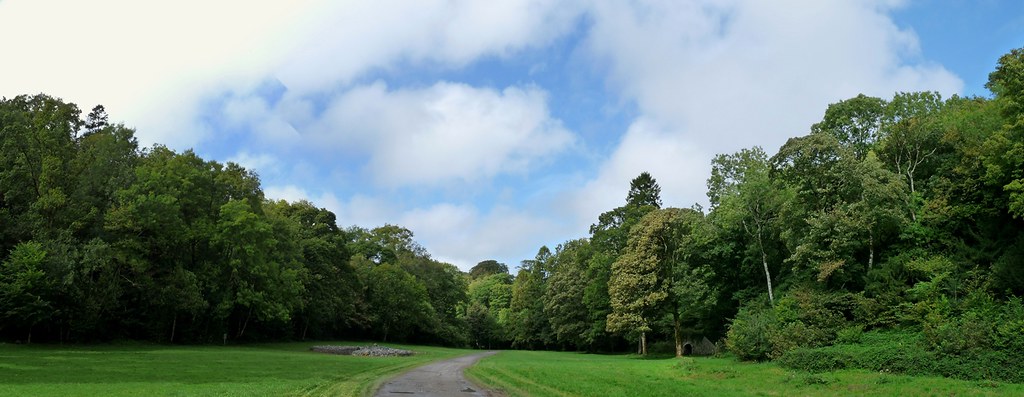
While we had been ensconced in the very fabric of Gower the clouds had cleared and the sun was finally shining. We decided that this would be the ideal opportunity to try out a new walk so mapped a route right around Parc le Breos and out to Broad Pool beneath Cefn Bryn. Apart from some rather damp conditions underfoot it was a great success with sightings of hundreds of Swallows, the odd House Martin (despite me saying I thought they had all gone), Linnets and a fantastic area of woodland that held Marsh Tit, Nuthatch, Siskin, Long Tailed Tit, Great Tit, Blue Tit, Chiffchaff and Willow Warbler all in the same mixed flock. The most unusual find though was a hollow tree that I originally thought had a wasp nest built inside it.
After a couple of minutes observing it soon became clear that the inhabitants of this particular nest were in fact Hornets, the UK’s largest wasp and a nice partner to the UK’s largest spider above.
There was a constant stream of arriving and departing individuals during our stay but thankfully they completely ignored our presence. Hornets are definitely a new species for me in this country, and I think the nest may be a significant find for Gower itself. The local wildlife blog mentions that the first ever Hornet sighting on the peninsular only occurred back in May this year, so a nest shows just how quickly they are colonising the area.
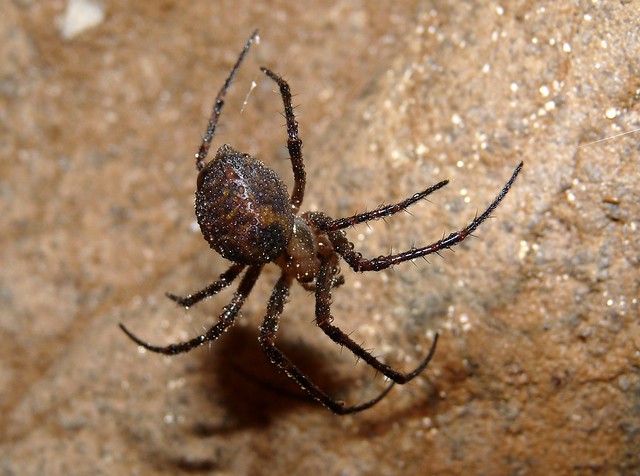
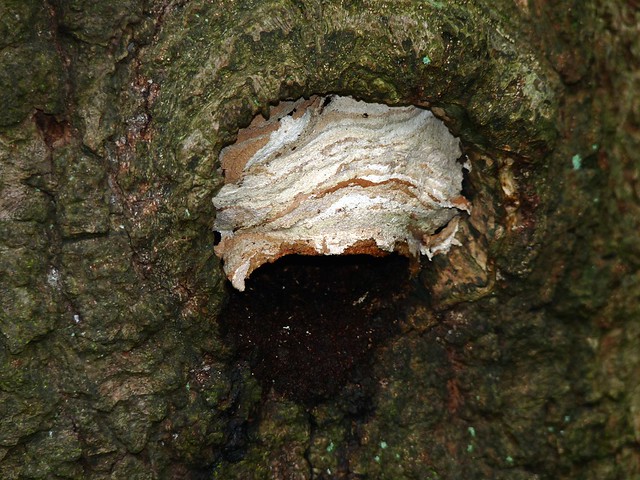
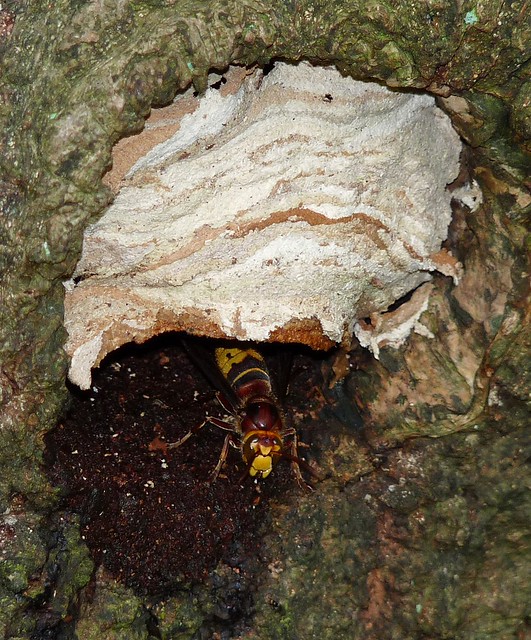
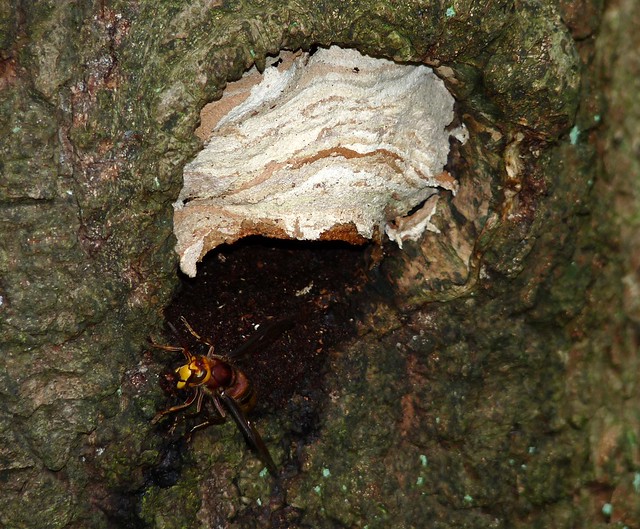
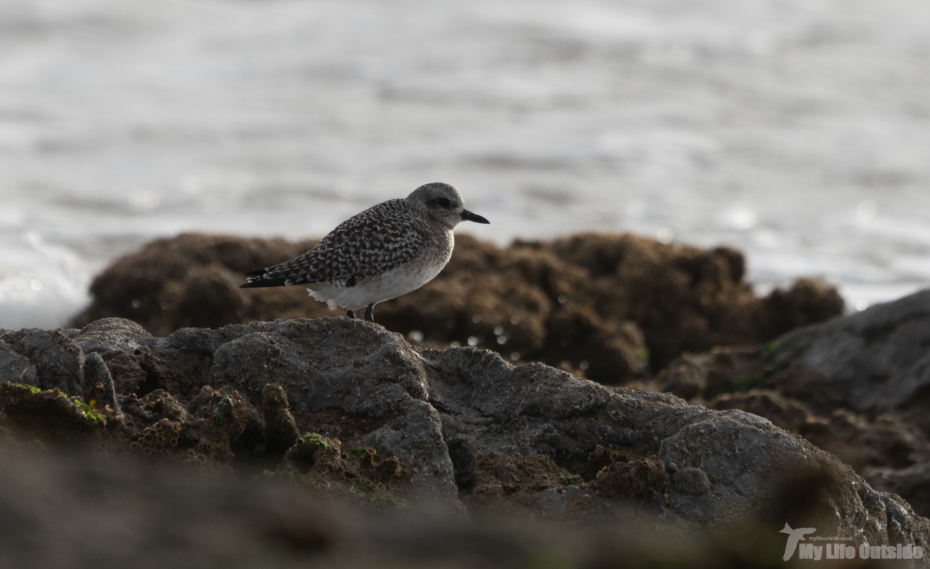
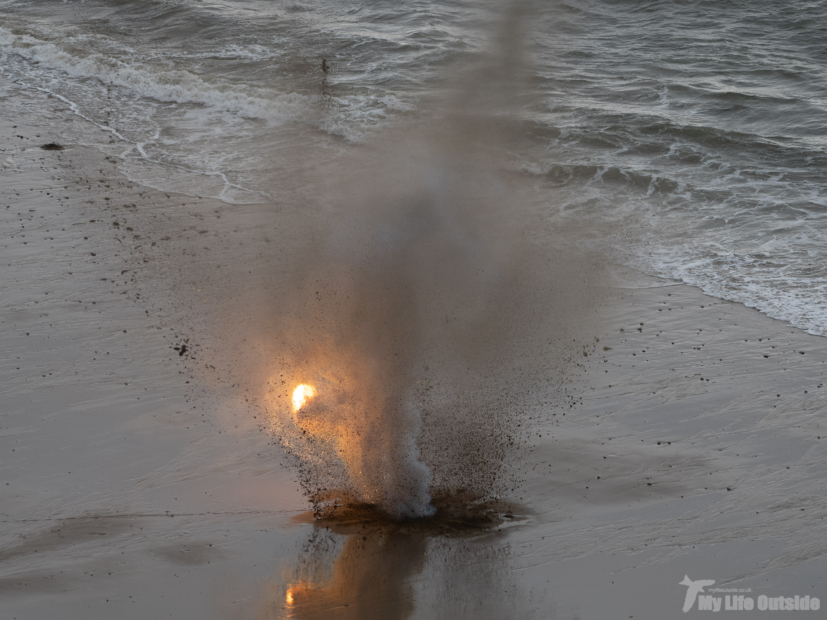
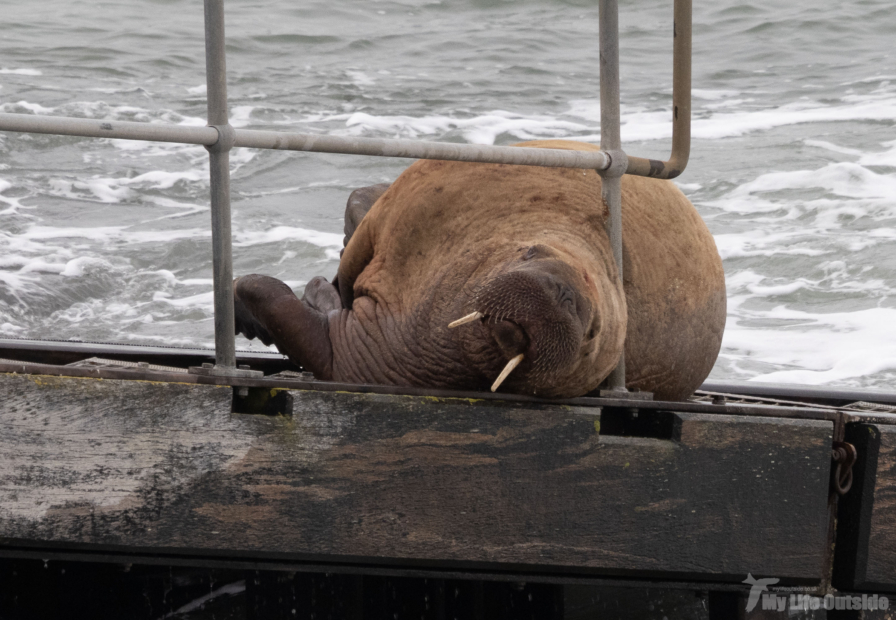
5 Comments
TexWisGirl · September 14, 2011 at 8:50 pm
wow. that hornets are not 'normal'. love the spider shot!
Bob Bushell · September 14, 2011 at 9:21 pm
That Spider is out of this world, it is superb.
holdingmoments · September 15, 2011 at 8:40 pm
That's one big spider Adam!
Adam Tilt · September 19, 2011 at 11:00 pm
TexWisGirl – they are certainly a bit intimidating.
Bob – thanks.
Keith – oh yes!
Barry Stewart · October 3, 2011 at 3:27 pm
Adam – fantastic discovery and great photos of the Hornet's nest. Do you have a 6-fig grid ref for the record please?
Thanks
Barry
moonmoths@virginmedia.com